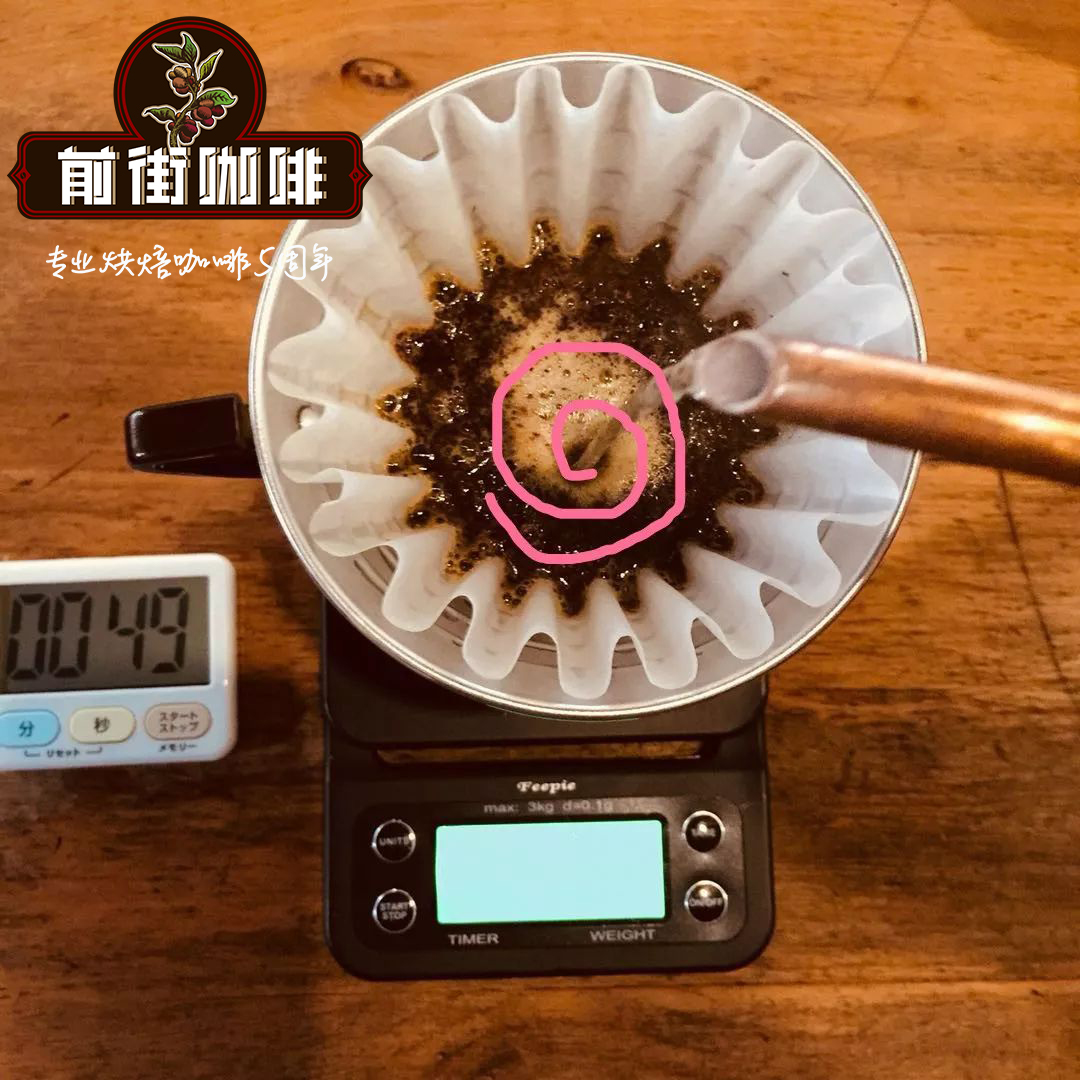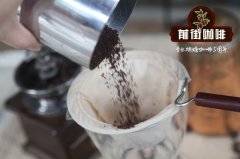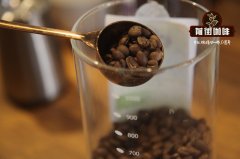El Salvador Pacamara Coffee Bean roasting suggestion _ hand flushing El Salvador Honey to treat Pacamara points

Professional coffee knowledge exchange more coffee bean information please follow the coffee workshop (Wechat official account cafe_style)
Salvadoran Coffee-Honey treated Pacamara
1. Treatment of Ventana Pacamara honey
Origin: El Salvador
Manor: Ventana Manor
Altitude: 1500m
Variety: Pakamara
Treatment method: honey treatment
Flavor description: this coffee has a sweet aroma of dried fruit, showing raspberries, lemonade, mangoes, strawberries, raisins and oranges. Bright, sweet and sour, pleasant and layered. The palate is delicate and smooth, with aromas of lemon grass and flowers on the finish.
Pacamara baking suggestion
With regard to the baking of Pacamara, I believe many bakers still have a lot of questions, including when we test the sample in the baking cup, we also know that it takes some skill and experience to present its best flavor. In order to help our baker friends understand Pacamara beans and make suitable baking plans to better show the best flavor of Pacamara coffee, the editor specially excerpted a chapter about Pacamara beans from Mr. Sasa's book "Coffee Man" to read readers.
Baked Pacamara (Pacamara)
"when baking Pacamara, we need to pay close attention to the density, moisture content, shape and size of beans, which affect the heat of each coffee bean. For example, high-density beans can conserve calories more effectively, and beans with large surface area absorb calories differently from beans with small surface area during baking.
In the process of roasting Pakamara coffee beans, we found that in the middle stage of roasting, the performance was similar to that of low-density coffee beans, but at the end, the temperature of coffee beans was similar to that of high-density coffee beans. As a baker, it's very frustrating that you can't control every stage of baking and let the coffee beans behave the way you want them to. At this point, what you need is to make a compromise to bake.
I spent weeks studying Pakamara's baking plan and began to observe the smallest details of baking. I found that at different stages of the baking process, the beans always show different shades of color, some golden yellow, some brown.
I screened the raw beans with a small wooden screen. After analyzing the screened coffee beans, we found an interesting phenomenon: after screening the same bag of coffee beans, we will find that their particle sizes are completely different. 21% of the beans are less than or equal to 18 mesh, the shape is round, the moisture content is 11.7%, the density is 680g Unix, 33% of the beans are greater than or equal to 20 mesh, the moisture content is less than 11.1%, the bean shape is oval, and the density is 660g shock ml; the remaining 45% Pacamara is between 19-20 mesh, the moisture content is slightly less than 11.5%, and the density is 672g/ml.
In addition to learning about such a special situation, we must also understand what kind of coffee beans Pacamara is. It is a new bean seed formed by grafting Pacas (Pacas) and Maragogype (elephant bean). The two kinds of coffee trees have completely different root, leaf and node structures, so their fruits also show completely different flavors. I personally prefer the multiple flavors and mouthfeel of those high-quality Marrago Rippi, which has a remarkable litchi flavor.
Pacas is a high-quality coffee bean. The dwarfism of the tree species is one of its advantages, which means that it is not affected by the wind speed; at the same time, it also has a very strong root structure, which is more resistant to disease than the Mara Gori bark. From Canon's point of view, grafting the two tree species together can create new varieties that are more attractive. Pacamara beans are widely cultivated in Central and South America, especially in El Salvador.
When we bake coffee beans of a single tree, coffee beans from the same tree are about the same shape and size. The results of the screening of Pacamara show why baking Pakamara is a challenge for bakers. Although it is also a single tree species, but because this bean is grafted from different tree species, the coffee beans have different structural characteristics.
These results suggest that although growing in the same tree, some coffee beans inherit genes from female species, while others inherit genes from male species, and some even inherit genes from both male and female species. This is completely different from inheriting genes from female or male species respectively.
For example, round and dense 18-mesh coffee beans are completely different from oval-shaped 20-mesh beans in the state of absorbing, preserving and releasing heat during roasting. After screening the beans, we will bake the coffee beans of these three sizes and record their baking curves to find the most suitable scheme. Then we bake them separately and put the beans together before the cup test. Finally, we found that the cup test score of the same coffee was 83-85 before screening, roasted and then mixed after screening, and the cup test score could be raised to 87.5.
In the roasting process, sugar browning occurs when coffee beans are heated to a certain temperature (Maillard reaction), and this stage is also the stage of the development of coffee bean flavor. In the process of roasting three different sizes of coffee beans, I found the crux of the problem: 20-mesh coffee beans reached sugar browning earlier than other sizes, which means that this part of coffee beans will be roasted for too long before coming out of the oven, resulting in overdevelopment and destroying the cleanliness, sweetness, organic flavor and aroma of coffee.
At the same time, 18-mesh coffee beans have higher density and smaller surface area, and they need more time to achieve sugar browning. If the baking time from this moment to the bean is not enough, it will lead to the insufficient development of coffee bean flavor, unable to maximize the flavor characteristics.
Therefore, when baking Pacamara, if there is no screening, there will be a situation similar to the quality loss of control caused by mixing raw beans and then baking. That is, our baking plan can not fully meet the roasting requirements of coffee beans. For the baking of Pacamara, we now have two options: one is to determine the number of coffee beans with the largest proportion, and choose a baking plan that is suitable for that number of coffee beans, but even such a roasting plan is not perfect. As for the second choice, it is to roast coffee beans with different mesh after screening.
Through this screening, coffee beans of different sizes are roasted separately, so that coffee beans with stable flavor can be baked without any compromise. At this point, the only trouble you need is that you need more time to sift through the beans. "
Angus. By Angus Mackie
Australian ONA COFFEE Coffee Roaster
Chief trainer and partner of ONA COFFEE, Australia
The second runner-up in the 2018 Australian barista competition
END
Important Notice :
前街咖啡 FrontStreet Coffee has moved to new addredd:
FrontStreet Coffee Address: 315,Donghua East Road,GuangZhou
Tel:020 38364473
- Prev

Suggestion on how to brew Pacamara Coffee and Philharmonic Coffee in El Salvador Coe Champion Manor
Professional coffee knowledge exchange more coffee bean information please follow the coffee workshop (Wechat official account cafe_style) Salvadoran coffee-Pacamara SHB washing Pacamara SHB Washed low-key and strength of the legendary coffee Pacamara is a hybrid cultivated in El Salvador in 1958, the parents are Pacas (Pacas) and elephant beans (Maragogype)
- Next

El Salvador San Marcellino Coffee Bean hand Powder Water specific Grinding Water temperature suggestion
For more information on coffee beans, please follow the Coffee Workshop (official Wechat account cafe_style) this Salvadoran coffee from San Marcellino Manor has aromas of cream, caramel and roasted hazelnuts with a hint of cedar, roasted with creamy maltose and caramel flavors, with a hint of jasmine, bright and pure, green apple and black vinegar millet.
Related
- Detailed explanation of Jadeite planting Land in Panamanian Jadeite Manor introduction to the grading system of Jadeite competitive bidding, Red bid, Green bid and Rose Summer
- Story of Coffee planting in Brenka region of Costa Rica Stonehenge Manor anaerobic heavy honey treatment of flavor mouth
- What's on the barrel of Blue Mountain Coffee beans?
- Can American coffee also pull flowers? How to use hot American style to pull out a good-looking pattern?
- Can you make a cold extract with coffee beans? What is the right proportion for cold-extracted coffee formula?
- Indonesian PWN Gold Mandrine Coffee Origin Features Flavor How to Chong? Mandolin coffee is American.
- A brief introduction to the flavor characteristics of Brazilian yellow bourbon coffee beans
- What is the effect of different water quality on the flavor of cold-extracted coffee? What kind of water is best for brewing coffee?
- Why do you think of Rose Summer whenever you mention Panamanian coffee?
- Introduction to the characteristics of authentic blue mountain coffee bean producing areas? What is the CIB Coffee Authority in Jamaica?

